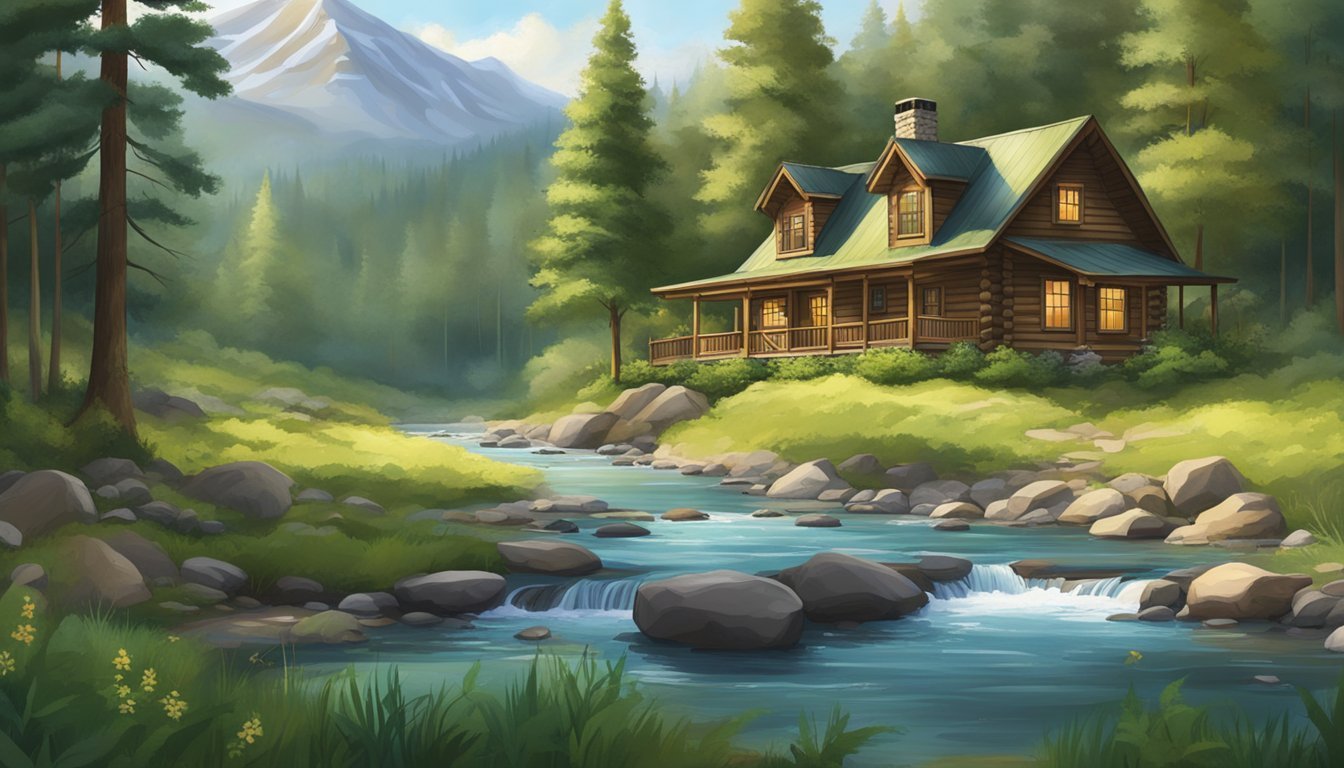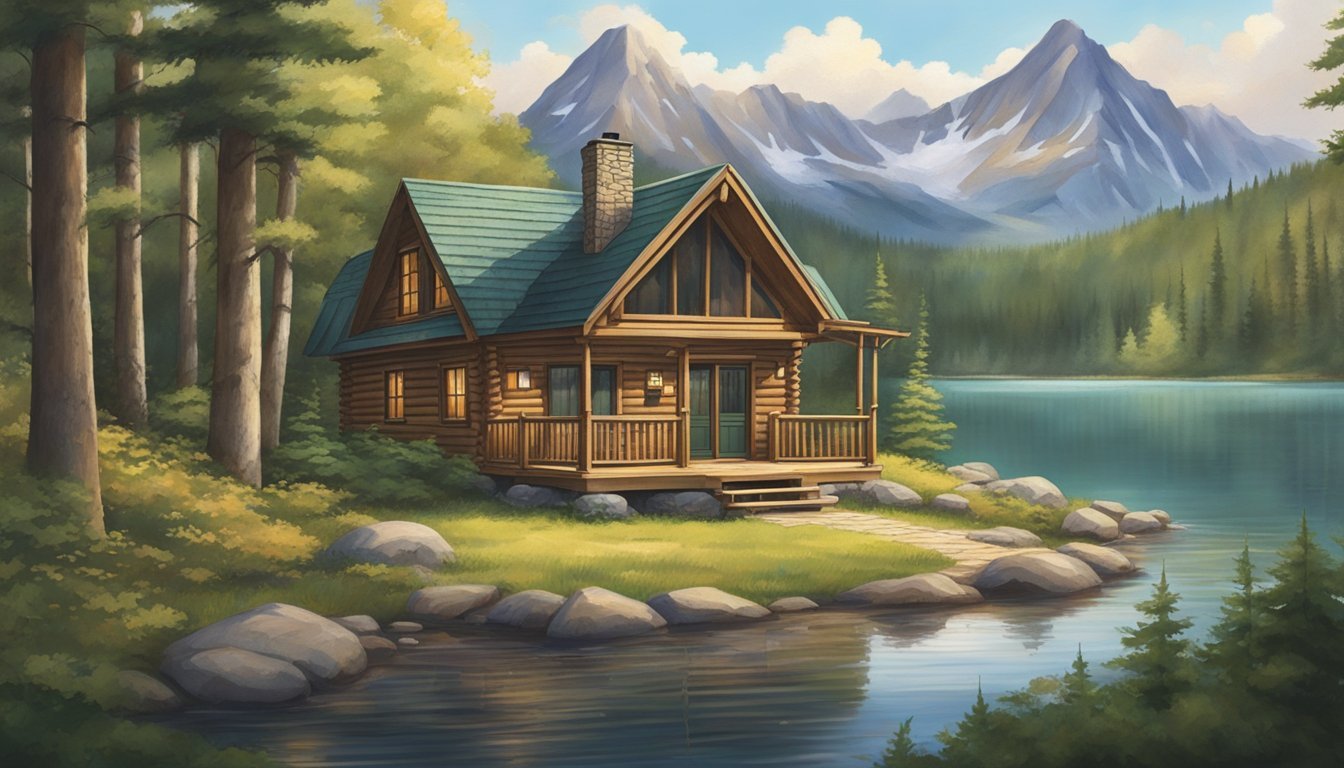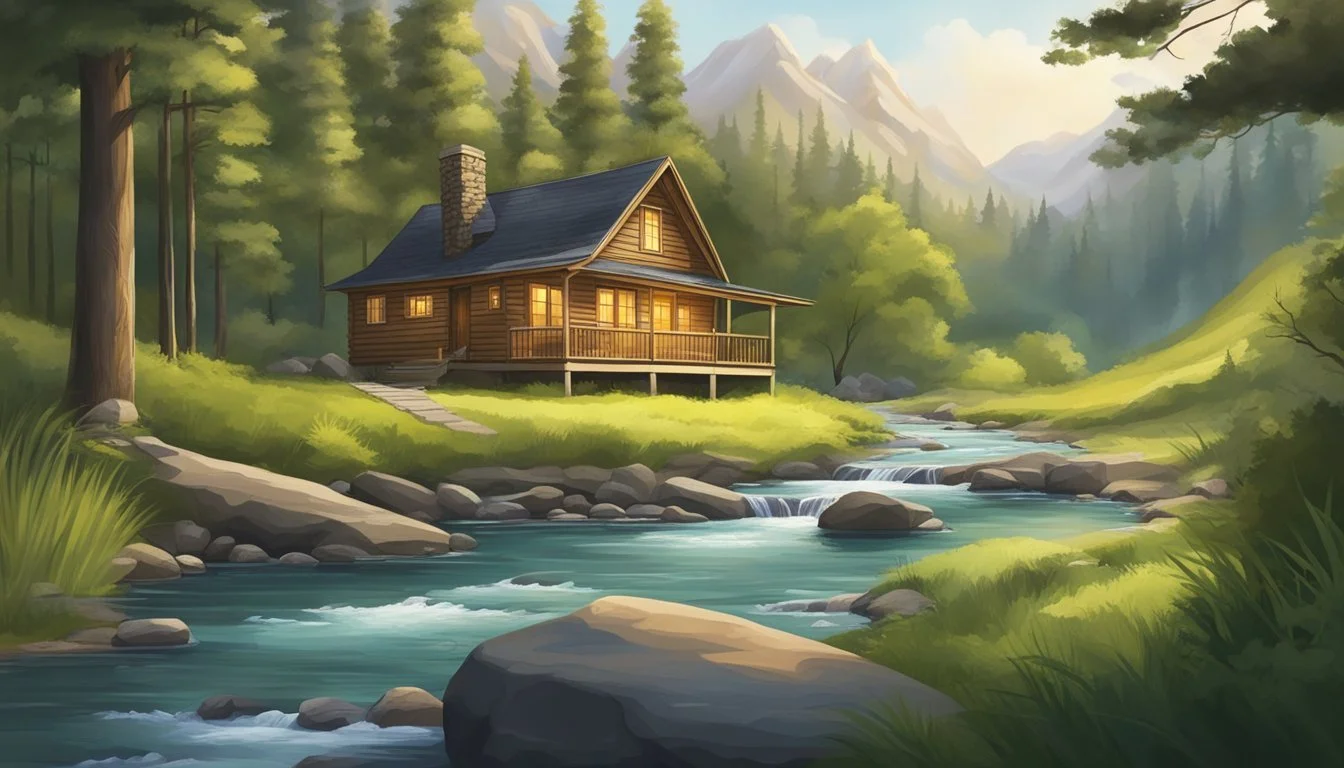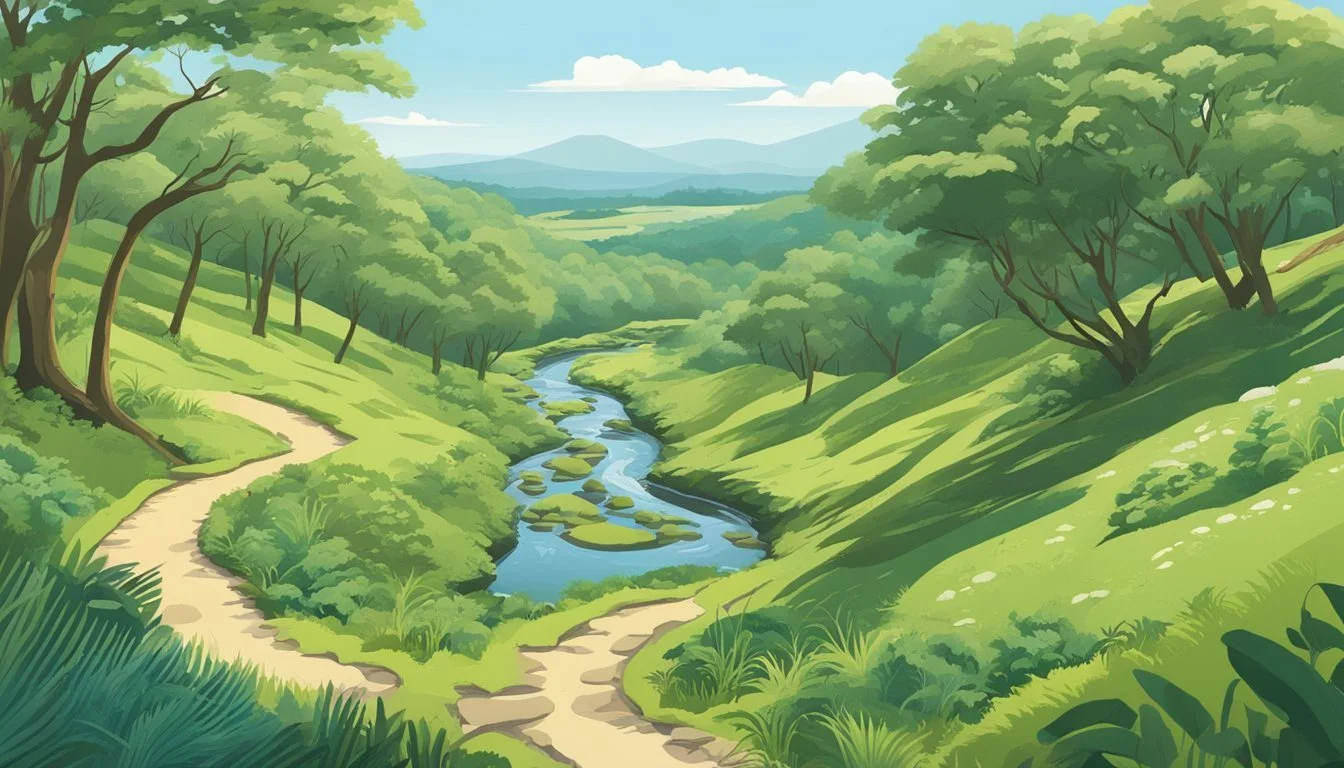Free Land in National Park Vicinities
Benefits of Living Near Nature
Imagine waking up every day to the serene beauty of a national park right outside your window. For many, this isn't just a dream but a reality, as living near these vast wilderness areas is more accessible than one might think. Property hunting near Rocky Mountain National Park reveals that a three-bedroom home averages $728,987, significantly lower than similar properties in nearby towns.
While free land in the literal sense is rare, there are ample opportunities to camp for free in national forests. These vast lands, covering 190 million acres in the United States, allow for dispersed camping where individuals can find a quiet spot away from the hustle and bustle. Many national parks also offer free entrance days, making it easy for residents and visitors alike to enjoy the natural beauty and diverse wildlife without breaking the bank.
The allure of living near protected wilderness areas extends beyond just the aesthetic. Various new real estate developments are emerging around nature preserves, catering to those who crave proximity to untouched landscapes. For nature enthusiasts, these developments provide a perfect balance of modern living and immediate access to the great outdoors.
Exploring the Concept of Free Land
Public lands in the United States provide a wide range of opportunities for individuals interested in living close to nature. From national forests to BLM land, these areas are managed to balance public use and conservation.
Understanding Public Lands
Public lands in the U.S. include national parks, forests, and areas managed by the Bureau of Land Management (BLM). These lands cover vast areas and are often designated for recreation, conservation, and resource management.
National parks are highly protected areas, while national forests and BLM lands offer more flexibility for activities like camping and sometimes even homesteading. National forests, for example, contain nearly 190 million acres, supporting diverse uses such as timber harvesting and recreation.
Public lands represent a fundamental aspect of American values, providing common spaces for enjoyment and conservation. The stewardship of these lands is crucial, balancing public access with the need to preserve natural resources.
History of Land Distribution in the United States
The history of land distribution in the U.S. is marked by significant policies and acts. The Homestead Act of 1862 allowed citizens to claim up to 160 acres of public land, provided they improved it with a dwelling and cultivation. This act fueled westward expansion and settlement.
In more recent times, the BLM manages nearly 245 million acres of land, with policies evolving to focus more on conservation and sustainable use. These lands are accessible for various public uses, though extensive free land programs like those of the 19th century have largely ended.
Understanding this historical context helps explain the current frameworks governing public lands and their uses.
National Parks and Adjacent Lands
This section explores the differences between national parks, national forests, and Bureau of Land Management (BLM) lands. It also outlines the respective roles and responsibilities of the National Park Service and the USDA Forest Service.
Differences Between National Parks, National Forests, and BLM Lands
National parks are areas set aside for their natural beauty, historic significance, and recreational opportunities. They are protected to conserve their unique environments and landscapes. Iconic examples include Yosemite National Park and Yellowstone National Park.
National forests are managed for multiple uses such as recreation, logging, and habitat conservation. They offer a mix of managed resources and protected spaces, like the Rocky Mountain National Forest.
BLM lands, overseen by the Bureau of Land Management, are public lands utilized for various activities including grazing, mining, and recreation. These lands offer a blend of commercial use and conservation.
Roles and Responsibilities of the National Park Service and USDA Forest Service
The National Park Service (NPS) manages national parks with a primary focus on preservation and public enjoyment. They maintain the integrity of the parks' natural and cultural resources and ensure accessibility for public use.
The USDA Forest Service oversees national forests, emphasizing sustainable resource management. They balance logging, recreation, water management, and habitat protection to support multiple objectives.
Both agencies play crucial roles in maintaining public lands but focus on different priorities and management strategies to meet their specific mandates. The NPS emphasizes preservation, while the Forest Service focuses on sustainable use and resource management.
Opportunities for Living Near Nature
Living near national parks offers unique residential opportunities and economic benefits. Proximity to such natural environments can enhance lifestyle quality and present potential budgetary advantages.
Types of Residential Proximity to National Parks
Residents can choose between various types of living arrangements near national parks. Urban areas, such as Seattle near Mount Rainier, provide city amenities with stunning views and access to nature. Suburban locations offer a balance between city conveniences and rural tranquility. Rural areas around parks, like those near Yosemite, provide the closest contact with nature, abundant wildlife, and a more secluded lifestyle.
Each type provides different experiences and influences on daily life, catering to various preferences and budget constraints.
Economic and Lifestyle Considerations
Proximity to national parks often correlates with increased property values and reduced poverty rates. For example, homes near Rocky Mountain National Park are priced significantly lower than similar properties in urban areas like Nucla, Colorado, making them attractive for those on a budget.
Living near protected areas can increase household wealth by up to 17 percent due to tourism and associated economic activities. Additionally, shorter commutes and improved quality of life are notable benefits, enhancing overall well-being. Housing markets in these vicinities frequently reflect the demand for such lifestyle improvements, with prices and incomes varying based on location and amenities.
Camping and Outdoor Recreation
Camping options around national parks vary widely, providing enthusiasts with ample choices for connecting with nature. This encompasses everything from developed campgrounds to dispersed camping in remote areas, each with its own regulations and requirements.
Understanding Different Camping Practices
Developed campgrounds feature amenities like picnic tables, fire rings, and sometimes even restrooms. These sites may be reserved or available on a first-come, first-serve basis. They offer a structured way to experience the outdoors with added conveniences.
Dispersed camping, also known as primitive camping, allows individuals to camp outside of designated campgrounds. It's often free but requires campers to bring all their supplies and follow the Leave No Trace principles. This form of camping can occur in national forests or Bureau of Land Management (BLM) lands. Sites are typically less crowded and provide a more rugged experience.
Free camping options are prevalent in these regions. They typically lie outside the confines of national parks but still offer stunning natural surroundings. Mobile apps, guidebooks, and maps can help locate these spots.
Camping Regulations and Permits
Regulations vary depending on the location and type of camping. For developed campgrounds, it's essential to check the specific park's or forest's rules regarding reservations, stay limits, and fees. Some areas might require permits, especially during peak seasons.
For dispersed camping, campers must ensure they are not in closed or restricted areas and adhere to any posted signs or guidelines. In many places, stays are limited to 14 days to minimize environmental impact. Permits may not always be required for dispersed camping, but it's crucial to confirm this with local authorities.
Leave No Trace principles are often enforced to preserve the natural surroundings and protect wildlife. Campers should pack out all trash, avoid harming flora and fauna, and camp at least 200 feet away from water sources.
Some regions may require permits for certain activities or access to specific areas. It's advisable to check with the local ranger station or park service for up-to-date information.
Accessing and Navigating Public Lands
Accessing public lands often involves a combination of preparation and on-the-ground knowledge. Effective use of maps and technology is crucial for planning, while knowing the locations of entry points and ranger stations ensures a smooth visit.
Using Maps and Technology for Planning Visits
Interactive maps and modern technology have made visiting public lands more accessible. Google Maps and other online mapping services allow for precise navigation and route planning to national parks and other public lands. Visitors can search for specific trails, campgrounds, and points of interest.
Downloadable apps provided by agencies like the National Park Service (NPS) offer detailed offline maps and current conditions. These tools often include real-time updates on weather, trail closures, and wildlife alerts. Using these resources ensures visitors are well-prepared and can enjoy their visit without unexpected disruptions.
Locating Entry Points and Ranger Stations
Entry points and ranger stations are essential for accessing public lands and gathering information. Ranger stations provide vital services such as permits, maps, and safety information. They are typically found near park entrances or major trailheads.
Visitors should research the locations of ranger stations and entry points before their trip. This allows for efficient travel planning and ensures they can start their adventures promptly. Ranger stations also offer opportunities to speak with knowledgeable staff about trail conditions and available services, enhancing the overall experience.
Knowing where to enter and where to find assistance is key for any trip to public lands. It maximizes safety and enjoyment, making the outdoor adventure both memorable and hassle-free.
Regional Focus on Popular National Parks
Many national parks in the United States offer unique and diverse environments that captivate residents and visitors alike. This section will explore some outstanding features of parks in Western states, mountainous regions, and unique ecosystems.
Highlights of Parks in Western States
Western states such as California, Utah, and Arizona host some of the most renowned national parks. Yosemite National Park in California is famed for its ancient sequoias and iconic vistas like El Capitan and Half Dome. Zion National Park in Utah boasts red cliffs and unique rock formations, making it a favorite among hikers and climbers. The Grand Canyon National Park in Arizona offers breathtaking views and the immense scale of the canyon carved by the Colorado River.
San Francisco's proximity to Yosemite makes it an excellent option for those wanting a mix of urban and nature experiences. Bryce Canyon in Utah, known for its unique spire-shaped rock formations called "hoodoos," also attracts many. These parks not only serve as recreational areas but also play a key role in local biodiversity conservation.
Features of Parks in Mountainous Regions
Mountainous regions offer unparalleled landscapes and diverse flora and fauna. Rocky Mountain National Park in Colorado is celebrated for its towering peaks, alpine lakes, and abundant wildlife, including elk and bighorn sheep. Glacier National Park in Montana features rugged terrain, pristine forests, and over 700 miles of hiking trails.
Yellowstone National Park, spanning Wyoming, Montana, and Idaho, is known for its geothermal features like the Old Faithful geyser and an enormous array of wildlife, including grizzly bears and wolves. Snow-capped peaks and clear mountain streams define these parks. Many offer activities like skiing, snowshoeing, and mountaineering besides traditional hiking and wildlife observation.
National Parks in Unique Ecosystems
National parks in unique ecosystems offer a glimpse into environments not found elsewhere. Arches National Park in Utah showcases more than 2,000 natural stone arches, a testament to the power of erosion. Everglades National Park in Florida features a subtropical wilderness with a vast array of rare and endangered species, including the American crocodile and the manatee.
Denali National Park in Alaska, home to North America's highest peak, provides an expanse of tundra and taiga ecosystems, ideal for spotting Dall sheep, caribou, and eagles. These parks protect critical habitats and allow visitors to experience their distinct biological landscapes, emphasizing the need for continued conservation efforts.
Residents near these national parks often benefit from cleaner air, a healthier lifestyle, and an appreciation for natural beauty that many urban settings cannot provide.
Environmental Conservation and Stewardship
Living near national parks and protected areas brings unique opportunities to actively participate in environmental conservation and stewardship. The relationship between human communities and these natural landscapes is critical for maintaining biodiversity and ecosystem balance.
The Role of Visitors in Preserving Natural Landscapes
Visitors play a crucial part in the conservation of wilderness areas. By adhering to Leave No Trace principles, they can minimize their impact on the natural environment. Simple actions, such as staying on designated trails, properly disposing of waste, and respecting wildlife, can significantly reduce human footprint.
Public Lands Day offers an opportunity for visitors to engage in hands-on conservation efforts. Activities like trail maintenance, habitat restoration, and clean-ups not only improve the health of these areas but also foster a sense of responsibility among participants.
Community Involvement in Conservation Efforts
Local communities are integral to the long-term stewardship of protected areas. Through collaboration with national park authorities, they can engage in monitoring wildlife, restoring habitats, and educating the public about conservation. Initiatives that promote sustainable living practices help reduce pressures on nearby ecosystems.
Community programs may include educational workshops, citizen science projects, and volunteer conservation groups. These efforts not only protect the environment but also enhance the well-being of residents by fostering a strong connection to nature and improving local environmental quality.
Local and Cultural Connections
Living near national parks offers residents unique opportunities for engaging with both natural landscapes and rich cultural histories. These connections range from daily interactions to deep-rooted cultural significance and heritage preservation.
Interactions Between National Parks and Nearby Communities
The proximity of national parks to local communities fosters unique interactions that benefit both residents and the parks. Residents often find themselves stewards of these natural treasures, participating in conservation and recreational activities.
Employment opportunities in parks or related businesses enhance local economies, as seen near Indian Creek and several state parks.
Community events often center around park-related activities, fostering a sense of shared stewardship and environmental responsibility.
Cultural Heritage and National Parks
National parks preserve historical and cultural landscapes significant to American history. From ancient Indigenous sites to historical battlefields, these areas are authentic testament to past eras.
The National Park Service's web map, "Cultural Landscapes of the National Park Service," provides insights into such sites, including numerous parks around Salt Lake City.
Efforts like the Touchpoints program illuminate the cultural narratives embedded within these protected lands, thus fostering a deeper connection between visitors and heritage sites.
Native American Lands and National Parks
National parks often encompass lands historically belonging to Native American tribes. For instance, proposed infrastructure projects, such as the Ambler Road near Gates of the Arctic National Park, highlight the conflict between development and preservation of Native lands.
Engagement with Native tribes is pivotal in park management, ensuring that practices honor traditional uses and spiritual connections. NPCA advocates for such cooperation, safeguarding both the environment and cultural integrity.
This collaboration helps conserve not just the land but also the spiritual and cultural practices tied to it, preserving a living heritage for future generations.









